#classicks
Text

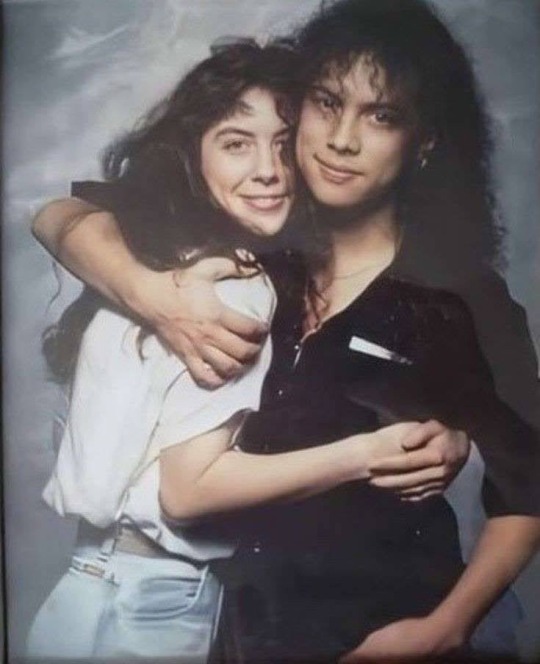


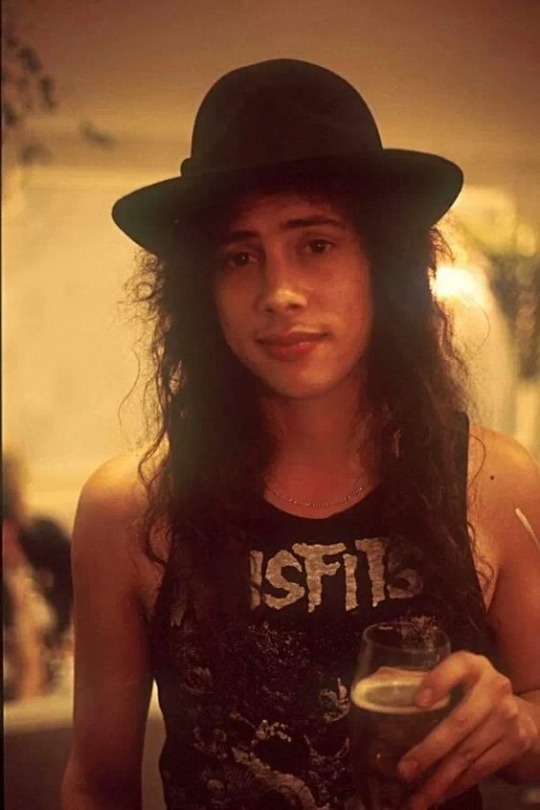




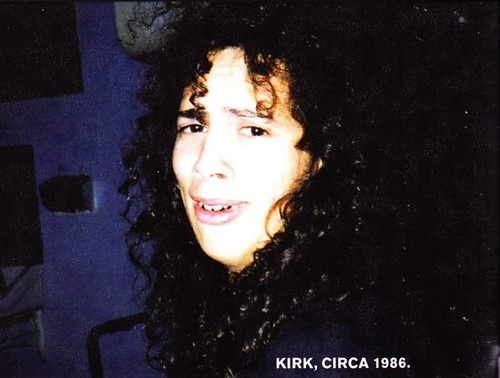
“Meanwhile, Metallica guitarist Kirk Hammett has earned high praise for his love making abilities, with one lady describing him as fantastic with a gorgeous dick.”
299 notes
·
View notes
Text

“Had Diamanda Galás been born 400 years ago, she would have been declared a witch. These days, she merely sings like she’s being burnt at the stake. The grimly beautiful Greek American chanteuse belongs to that elite company of divas of despair that includes Nico, Lydia Lunch and latter-day Marianne Faithfull. Unlikely as it sounds, Galás has hooked up with Led Zeppelin's John Paul Jones for this album, which matches his menacing slabs of eight-string bass to her avant-garde sensibilities and operatic ululations. The results seethe with tension and drama. “Skótoseme” (Greek for “kill me”) sees Galás’ mourning wails swept along by an Arabian drone. On the sarcastic “Do You Take This Man?”, she lashes out like a blues mama who’s been pushed too far, while the title track details a group of vengeful prostitutes gleefully plotting to murder a john. The Sporting Life is marinated in equal parts malice and black humour.”
/ From my review of The Sporting Life for the British music magazine Vox, 1994 /
“John Paul Jones and Diamanda Galás crumble the little gingerbread house of rock illusions with their collaborative album, The Sporting Life, detonating all the overplayed crap we’ve become accustomed to - the bland bass/drum rhythms, the singer hooting oooh baby baby, the guitar and its obligatory solo wheeze. The album opens the genre to an expanse where divisions between what is electronic and what is “natural” smear, where the instrument is only as good as its ability to scalp you …”
/ From Bomb magazine, October 1994 /
Released thirty year ago today (6 September 1994): the album The Sporting Life, a collaboration between Diamanda Galás and John Paul Jones, a true marriage made in heaven / hell. I saw the duo perform together in London on this tour. In addition to the songs cited above, I’d recommend the ballad “Tony” (on which Galás vows “I'll walk the street at night / screamin' your name …” and sounds like a bummed-out Janis Joplin) and her wild interpretation of the 60s soul classic “The Dark End of the Street.”
#diamanda galas#john paul jones#led zeppelin#lobotomy room#the sporting life#avant garde#post punk#scary diva#operatic#heavy rock#dark end of the street#fierce#chanteuse#classick#hard rock#blues mama
23 notes
·
View notes
Text

Mick Jagger has been alive for 80 slutty slutty years!
#mick jagger slutpocalypse#mick jagger#happy birthday you slutty old man#classick rock#the rolling stones
24 notes
·
View notes
Text

OSINT specialists traveling for investigation in 18th century.
3 notes
·
View notes
Text
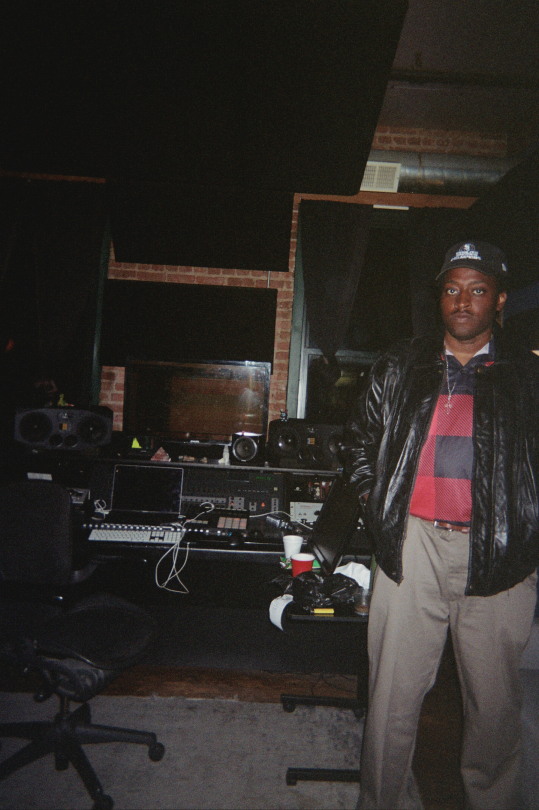
#The GTW#classick studios#Chicago#Chigeria#House music#Electronic music#R&B#avant pop#black fashion#mens fashion
3 notes
·
View notes
Text
classick rooooock and thinking about luther von ivory


#ranfren#randals friends#luther ivory#luther von ivory#what a night#and im making spaghetti and meatballs
7 notes
·
View notes
Text

CRIMINALLY INSANE (1975) and SATAN'S BLACK WEEDING (1976)
2 classicks!
17 notes
·
View notes
Text
i was like. im going to start s13 because i want to see widower arc and then i was like well i should watch s12 because mary is there and castiel is pregnant and then i was like well i should watch s11 because. I guess not for any reason except the emotional build and also what the hell were they doing with amara. so as long as im doing that i might as well watch s9 because of human cas and s10 because of mark of cain. And if im being honest then i need to see s8 purgatory and we can ignore s7 and of course have to watch s6 for tmwwbk and s5 classic deastiel s4 even classicker handprint brand and handprint sex. And s3 who doesn’t love hellhounds or whayever was going on. And s2 psychic kids and s1 where you meet the bacteria… dont make me rewatch this whole thing itll kill me and its so much and also its so bad
1 note
·
View note
Text
Why I love the Spymaster #106: He's American Gothic!
Find my full series under the HELP I WUVS HIM tag.
#106: He's American Gothic!
It's 2023, folks, and I'm Back On My Bullshit! Are you ready for even more reasons why I love the Spymaster? I've got tons!
The Spymaster gives me lots of fodder for analysis in The Power of the Doctor when he puts himself into classic paintings of modern Western art. I have a bunch of other mini essays about his gender presentation in these paintings [#61], The Scream [#79], the paintings as classics [#100], the Mona Lisa [#101], Girl with a Pearl Earring [#102], and The Hay Wain [#103].
There's one painting that I haven't discussed yet: Grant Wood's 1930 work American Gothic. Here's a reproduction:
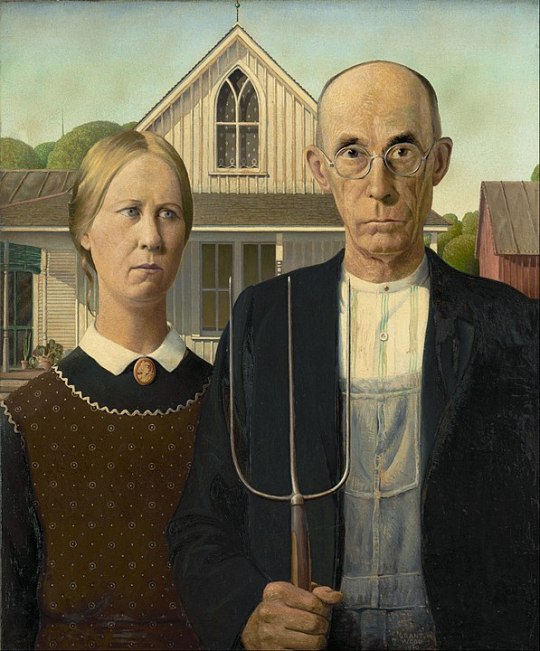
And here's the Spymaster's version:
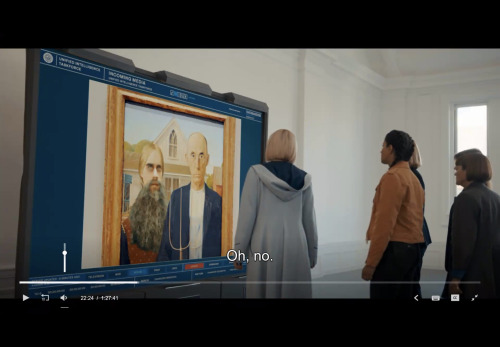
Wood's painting depicts a farmer with a pitchfork standing next to his daughter. The farmer holds a pitchfork and stares directly at the viewer, while the daughter squints toward the farmer. The white clapboard house in the background belongs to them. The image is one of the most widely recognized and parodied of 20th-century U.S. art.
The characters' clothes tie them to an idealized view of the rural U.S. The farmer's denim overalls refer to the durable clothes he needs as a laborer, while the print on the woman's apron is a colonial print evoking rural Americana. Their house too ties them to the land; it is in a style known as Carpenter Gothic [the painting's title is a play on this name], which takes the forms of Gothic architecture, such as the tripartite, arched window on the house's upper story, and turns them into quaint, rustic forms, suitable for U.S. farmhouses. The farmer and the daughter thus represent an imagined past when the United States was populated by simpler, more straightforward people who supported themselves through honest labor.
At the same time, there's a precision and an almost hostile directness in the painting. Though the figures are idealized in some ways, Wood renders them with great detail and personality as specific individuals. Look at the sad, peacefully drooping set of the farmer's eyes and the thinly plucked, perfect curves of the daughter's eyebrows. In this way, they resist becoming subsumed into stereotypes. Furthermore, the farmer's eye contact with the viewer and his grip on the pitchfork create barriers between the viewer and the subjects. The farmer seems ready to stare down the viewer and skewer them with the pitchfork if necessary. The daughter, whose grim distracted gaze looks off to the side, also appears not to be playing nice for the audience. The figures seem displeased with the painting, the painter, and the audience.
As for the Spymaster, he, being a lover of the classics, of course can't resist the skewed nostalgia of this piece. The Spymaster fits himself into the daughter's position, thereby taking on the idealized, but also sharpened and distorted, air of Ye Olde Classicke Americanne Homesteade. Just as he appropriates English timelessness and authenticity by putting himself in The Hay Wain [#103], so he does the same here across the pond. He's trying to legitimize himself around the world here, not only in European artworks, but in U.S. ones too.
Also note the Spymaster's expression in his version. Like I point out above, the daughter in the original does not meet the viewer's gaze; in the Spymaster's version, however, he, like the farmer, stares directly at the viewer. Unblinking and deadpan, the Spymaster refuses to be a passive subject of this painting. Like the farmer, he recognizes that he is participating in the creation of a myth about the U.S.'s agricultural past. He performs his part, but he does not allow the specific details of his face and his identity to be effaced in some generic depiction of "Americana." He takes control of his own performance and presentation.
@natalunasans @sclfmastery @rowanthestrange @timeladyjamie @whovianuncle
#the spymaster#spymaster#the master#doctor who#dw meta#art history#grant wood#american gothic#HELP I WUVS HIM#nostalgia and resistance to it in one painting
12 notes
·
View notes
Photo


HUMAN HOST IN PUBLIC: The First Two Decades Part 2 - a Realicide show at an abandoned apartment house in Cincinnati, Ohio; Autumn 2004
-----------------------------------------------------------------------------------------------------------------
People who live in or near the midwestern city of Cincinnati possess an odd mix of cultural influences. Smashed up against the border of Kentucky bluegrass to the south, the Appalachian foothills directly to the east, and the agricultural bread basket of Indiana to the west, the citizens of this Ohio River beacon have all been defined by contentious issues of identity. The southern influences seem to bubble up stronger here than in any other city in Ohio, even though for the most part the state has always been squarely neutral or unapologetically alligned with the Union when it came to political divides left over from the American civil war.
One of the more harmless southern culture elements in Cinci is the southern accent. Many Cinci residents speak with a drawl more akin to that of their neighbors in West Va. and Kentucky. With this accent, words, sometimes even single letters, can sound as if they have two or three extra syllables.
At Human Host’s first Cincinnati show, before the music began, we overheard a kid in the audience off in a corner talking with some of her friends. Her voice had a thick southern drawl. She was talking about how that day was her birthday and someone had gotten her “EGGS” as a present. This inspired laughs and a’lot of confusion. I stopped whatever I was doing and replied, ”Eggs??? Really? That’s a strange birthday present. I mean, there’s nothing wrong with that, but...” She laughed and replied, ”No, no, no. Not eggs, i got ‘E’, as in ecst*sy” (aka the wild party drug so popular at raves and other EDM-type music fests). Her southern accent was so prominent that out of the corner of my ear the letter “E” seemed to sound more like “Ehhh” or “Ayy”. Since there is no such noun as “Ehh”, my imagination quickly transformed “Ehh” into “eggs”.
It was just a mistake, but in a weird way it was also a poetic allusion of things to come; eggs and ecstasy were ultimately the two things that symbolized the energy that went on to illuminate Human Host’s first Cinci show.
~
Before Human Host ever played Cincinnati, Rick Weaver’s other band New Flesh had made a splash in the town a few months-to-a year prior to HH’s debut there. Rick had turned the Host crew on to the records, flyers, zines, and web content created by Cinci multi-media collective Realicide; the collective’s teenage co-founder Robert Inhuman (who today is known as Robert Imhuman) was the promoter who booked New Flesh and he also had a great interest Rick’s other early 2000′s projects (mainly, Organ Donors, Flowers In The Attic, and eventually Human Host).
Anti-authoritarian/anti-imperialist provocation was and remains to be Realicide’s main raison d’etre, but these kids weren’t by-the-numbers punks. They refused to accept any strict convention involving punk tradition, especially when it came to hierarchies and aesthetic parameters. Much like Human Host, Realicide is concerned with creating a medium as expansive as their message. The group’s influence has extended far beyond the noise scene that initially embraced them. Today Realicide provides a free mobile sound system for local political demonstrations, they set up DIY film screenings with their offshoot group Gonx, and the Realicide artists have even gained a foothold in the global experimental punk scene by touring internationally. The Realicide record label releases material from like-minded overseas artists, and has secured worldwide distro for the releases of the many Ohio-based Realicide stalwarts.
Even though political elements have always been only a tiny piece of the chaotic puzzle that is Human Host’s inspiration, Realicide’s methods weren’t wildly different than ours. Their distinctly 21st century-style multi-media weirdness was drenched in classick crust punk presentation; just like us they refused to embrace the future, nor did they worship the present or the past. Just like us, this was a crew interested in altering their reality through creative work in as many different and positive ways as they possibly could. Come hell or high water, Realicide and their allies were going to save the world in their own weird way and we wanted to help them do it.
As we started booking our second tour in the fall of 2004, Rick Weaver convinced Robert and the Realicide crew to help book a Cinci stop for us. Memories about the tour date’s venue and exactly how the Realicide crew secured it are unclear; Rick Weaver seems to think this show may have originally been booked at a cafe or coffee shop. If that was the case, a last minute re-scheduling was probably neccessary after the original venue randomly cancelled on Robert. Touring around the U.S. playing experimental pop music was still a relatively new thing, especially when it came to the domestic DIY basement show scene circa the early 2000′s, a time that was essentially still culturally smothered by lingering trends of the 1990′s. Consequently, last minute cancellations were common for non-genre artists (aka artists who weren’t easily marketable) in this period.
But Realicide was acutely aware that problems like this were always possible. On a dime, the kids were able to find a back-up venue by utilizing the basement or laundry room of an apartment building one of their friends was sort-of living in. The place was a big old 5 story house on a hill with a basement and an attic. It had been converted into a apartment complex sometime in the 1940′s or 50′s, maybe earlier. By the early 2000′s the building was either abandoned, or its residents were about to be evicted. It felt very awkward hangin in there when the other acts (Realicide and poet/spoken word artist Jim Swill) were not playing. It often felt kind of like we were all tresspassing in there. We had to go upstairs to an apartment to use a bathroom and the place had almost no furniture, and many of the other apartments’ doors were wide open revealing spaces just as desolate as the one where the “public” restroom was. It was clear that - whatever was going on with the building - no one was supposed to be in there.
Adding to the eerie abandoned atmosphere was the fact that the night of the show was cloaked in a dense fog much more akin to that of coastal New England than any midwestern place. It was as if we brought a little piece of “The Evil East” along with us.
By late 2004 HH had been trying out many different line-ups and forms of live performance at gigs, but we were somewhat stuck in a rut by forcing ourselves to do something different at every single show (mostly as a means of adding a dynamic confusion texture to the work). One show we’d be an acid punk band with guitars and primal drums; the next we’d be doing improv drone music; the next we’d be playing quiet experimental folk using toy instruments; and the next we’d be stomping around crooning the paganistic electro-crunk that eventually earned us the 2005 “Best Live Act” award from the Baltimore City Paper (at that time we were one of the few non-genre groups ever to achieve that distinction).
Since we knew that Robert and his friends were more than enthusiastic about stretching the parameters of performance and presentation, it seemed like the autumn 2004 Cinci event needed to be extra special. Back in the early 2000′s our sets were often meticulously planned, especially sets that we did on tour. Shortly before we hit the road in October ‘04, I came up with the idea of taking a big chance in Cinci and trying out a set that incorporated nearly all of the various shades of Human Host into one mega-diverse half-hour production. Even if the idea fell flat, even if we totally screwed up, we knew that the Realicide kids would at the very least respect us for honestly trying to do something ambitious.
As it turned out, the risky/schizoid set idea paid off. Even the screw-ups ended up making the set incredibly powerful and special. Our demonic crunk tunes would end and we’d collapse on to the floor only to start improvising drones created with tape machines, microphones, and processed live toy drum sounds that lasted only for a minute at a time. As each drone segement unfolded we’d kill the lights using a floor switch connected to the harsh work lights we used to light up most of our 2000′s gigs. When the painful white lights blasted back on we blasted back into our crunkenstein alter egos, howling out our vocals in operatic/troubadour style as we carreened around the room, possessed by music and the ethereal madness of creation on the fly.
Sometimes when we’d kick off the lights we’d forget where the switch was and there’d be a few seconds of maniacal laughter and confusing/out-of-breath discussion accompanying the opening of each crunk beat as we fumbled around attempting to find the “on” switch again. Instead of causing a hiccup in the action, these spontaneous introduction skits only made the performance and the subsequent flood of brutal light a thousand times more intense. Though the dance moves may consequently have been extra sloppy, the overall effect of this set was more energetic and rewarding for both artist and audience than anything we’d done before.
The lyrics and prose of Human Host often detail the symbiotic relationships of vulnerability and chaotic energy, reality and fantasy, intoxication and sobriety, stupidity and intelligence, the old and the new, the weird and the normal, Earth and outer space. As this set concluded I really felt we had covered all of these bases and probably about a billion previously unknown others. That feeling was beyond exhilirating; in the space of a few minutes our entire world had undergone a radical/irrevocable change for the better. While the spring 2003 Human Host show at St. Thomas Church in Towson* was where we were spiritually born, Human Host’s Autumn 2004 Cincinnati show was where our spirit came of age; the *egg* of Human Host had hatched in an outburst of interdimensional multi-media *ecstasy*.
- Mike Apichella, co-founder of Human Host
~
photo credit: two shots taken by Scott Russell at a Human Host tour date that occurred at Nowarehouse in Cincinnati, Ohio circa Autumn 2008; unfortunately there are no known photos of the first HH Cinci show circa 2004.
* https://humanhost.tumblr.com/post/704049932941803520/human-host-in-public-the-first-two-decades-part
8 notes
·
View notes
Text

Cutie patootie
43 notes
·
View notes
Text



“The doorbell rang, I opened the door and there she was – my dream-come-true, four-hundred pounds of raw talent. I carefully invited Jean in, and the first thing she did was goose me to totally unnerve me. She asked for a drink and got it. She laughed and said she had no objections to nudity (“I’ve got a lot to show, honey”), would certainly dye her hair blonde (“Big deal. I’ve had blonde hair twice before”) and asked for a special chair that wouldn’t break when she sat on it. After listening to her give a hilarious reading from the script, we went over the contract, I gave her an advance on her salary, and it was settled.”
/ John Waters recalling his first encounter with Jean Hill when she auditioned for Desperate Living in the book Shock Value (1981) /
“Could the mighty Jean Hill in her very heart have been a deeply sincere, vulnerable and perhaps even a (gasp!) shy person? Actually, I think she was, and her outrageous persona was a way to compensate for this and connect with people and get them to drop the bullshit, prejudice and affectation and deal with her person-to-person. She refused to be labelled. She was fat, she was black, and her health problems forced her to become a kind of permanent “patient,” and she was sometimes on welfare, so she was also filed as a “charity case,” but she refused to be put in any of these boxes or to be looked down upon. She was forged in defiance. There is nothing unique about that — the ghetto is full of defiant people, but it becomes special when that defiance is coupled with intelligence, wit, humour, compassion and a flair for the absurd, and that’s what made Jean stand out in any crowd.”
/ From the Bright Lights Film Journal obituary for Jean Hill by Jack Stevenson /
Died on this day ten years ago: John Waters’ majestic “soul diva” Jean Hill (15 November 1946 – 21 August 2013), unforgettable as Grizelda in his 1977 bad taste punk classick Desperate Living (pictured). (She also makes a fleeting but vivid cameo appearance in Waters' 1981 film Polyester).
#lobotomy room#vintage sleaze#desperate living#jean hill#john waters#cult cinema#cult film#cult movies#shock value#bad taste#punk#queer
151 notes
·
View notes
Text

Artfight sketch I did for a character named Vortex, owned by Classick! It reminded me of a grasshopper so I had to draw a couple together.
2 notes
·
View notes
Text

another classick sketchdump: highlight reel of the past 2 months edition! (this is just a fraction of the stupid shit i sketch in class lol...)
ft: my ocs, buff orc women, he/him lesbian captain kid, sonic with a bong, my friend's crazed eyes, another friend in a jar, meowrails + tavros, and The Skull!
#iras silly doodles tag#sketches#my art#my ocs#fan art#teeeeeeeeeechnically#ough#equius zahhak#nepeta leijon#nepeta for the nepeta god#tavros nitram#sonic the hedgehog#captain kid#disclaimer idk shit about one piece i drew lesbian kid b/c my lesbian friend LOVES him
9 notes
·
View notes
Text
Getting into Green Day after years of listening to classick rock is weird like woah Billie Joe Armstrong is younger than both of my parents
#i had a really big beatles phase okay i listened to songs that were hits before my mother was born#(funnily enough the song i just referenced came out the same year as when my mother was born)#ANYWAYS green day now feels fairly recent compared to what i previously listened to
2 notes
·
View notes